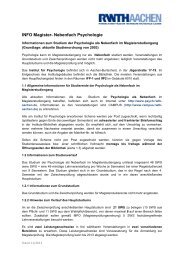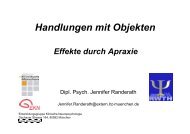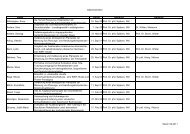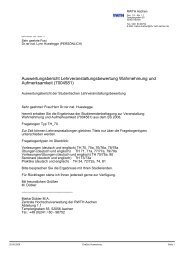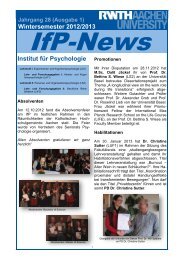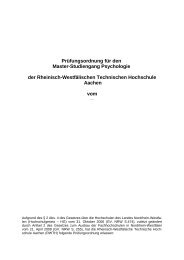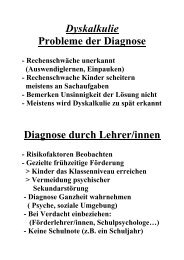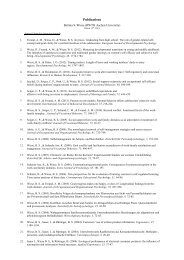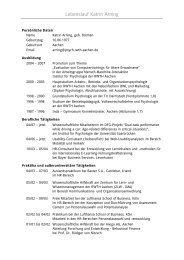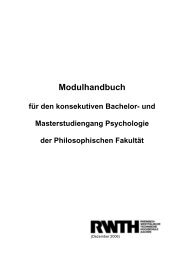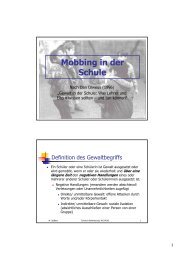1 Effects of Sensorimotor Transformations with Graphical Input ...
1 Effects of Sensorimotor Transformations with Graphical Input ...
1 Effects of Sensorimotor Transformations with Graphical Input ...
Create successful ePaper yourself
Turn your PDF publications into a flip-book with our unique Google optimized e-Paper software.
Additionally, the main effects <strong>of</strong> the factors “cursor gain” (F(1, 18) = 7.14; p < .05)<br />
and “ID” (F(2, 17) = 353.13; p < .01) were significant. Movement times increased from the<br />
easiest (2.6 bits) to the most difficult task (4.4 bits). However, this increase <strong>of</strong> movement<br />
times was more pronounced in the low gain condition <strong>with</strong> an increase <strong>of</strong> 874 ms than in the<br />
high gain condition (increase <strong>of</strong> 633 ms) yielding a significant interaction between both<br />
factors <strong>with</strong> F(2, 17) = 20.18; p < .01. -- The analysis <strong>of</strong> the error percentages revealed no<br />
significant effects. Participants responded quite accurately <strong>with</strong> a mean error percentage<br />
below 5%.<br />
Data were further analysed <strong>with</strong> regard to effects <strong>of</strong> ID according to Fitts’ law (Fitts,<br />
1954). For each <strong>of</strong> the four gains by transformation conditions a separate regression analysis<br />
<strong>with</strong> the 4 ID conditions (= log 2 (A/W + 1); modified formula by MacKenzie, 1992) was<br />
calculated for movement time (Figure 1). In the low gain conditions slopes were different<br />
from zero (all <strong>with</strong> p ≤ .05) and they were comparable between touchpad and mini-joystick<br />
(482 ms/bits and 488 ms/bits). Intercepts did not differ significantly from zero. Overall,<br />
regression lines fit the data very well and ID accounted for most variance in movement time<br />
in the low (all R 2 above .95) and high gain conditions (all R 2 above .68).<br />
2.3 Discussion<br />
There were three main findings <strong>of</strong> Experiment 1. Firstly, the touchpad was used more<br />
efficiently than the mini-joystick when a high gain was used. At first glance —and in<br />
accordance <strong>with</strong> our hypotheses—the more demanding force transformation <strong>of</strong> the minijoystick<br />
seems to be inferior when compared <strong>with</strong> the motion transformation <strong>of</strong> the touchpad,<br />
especially when a higher gain was introduced. At second glance, however, results showed an<br />
impact <strong>of</strong> gain change on touchpad performance only. As observed for other motion<br />
transforming input devices (e.g., Accot & Zhai, 2001; Casiez et al., 2008; Jellinek & Card,<br />
10



